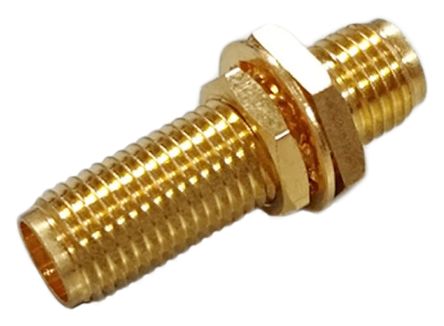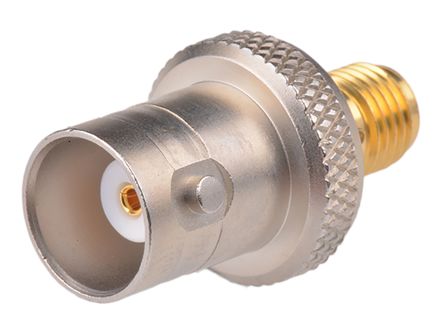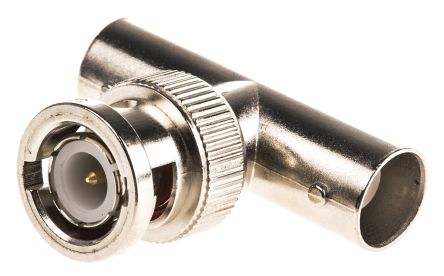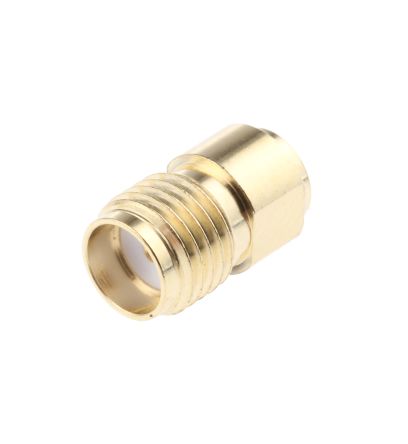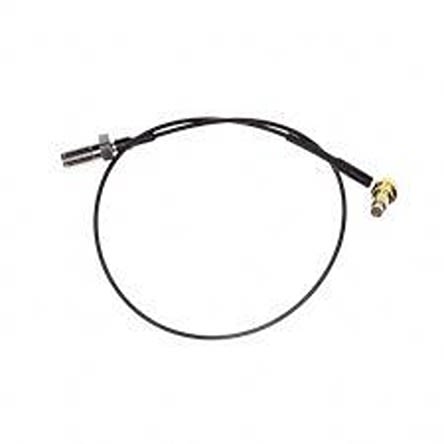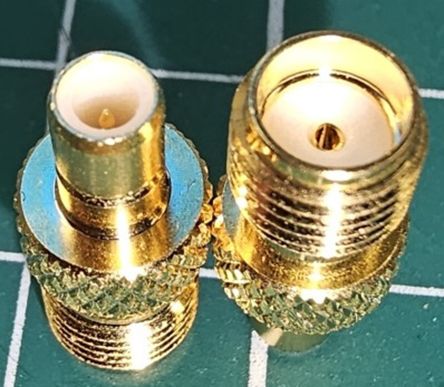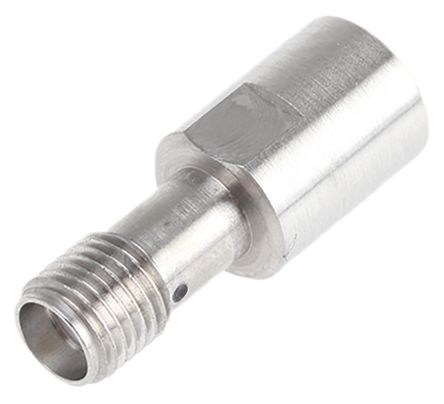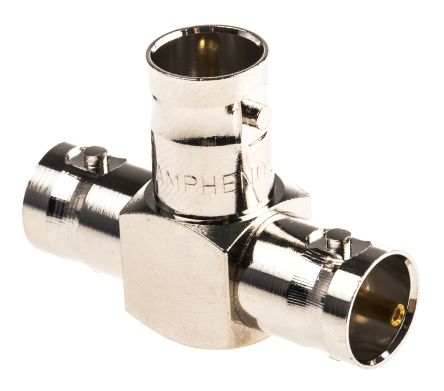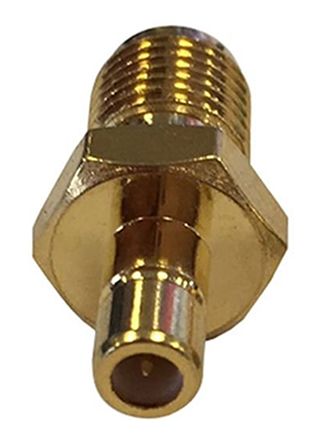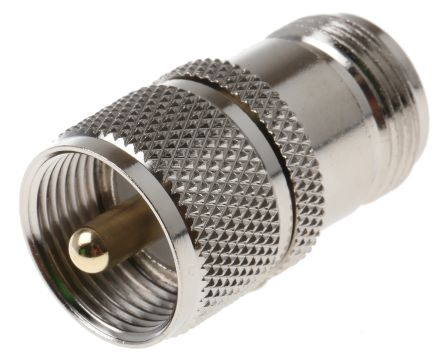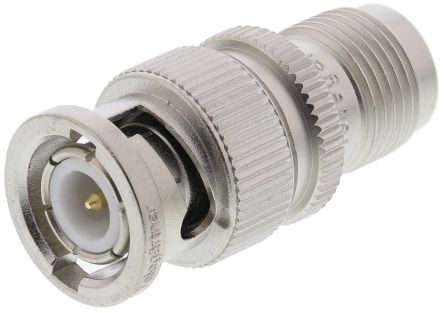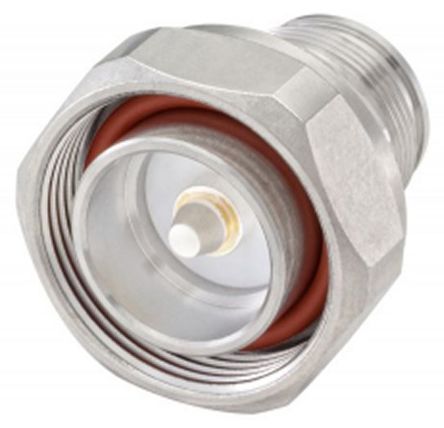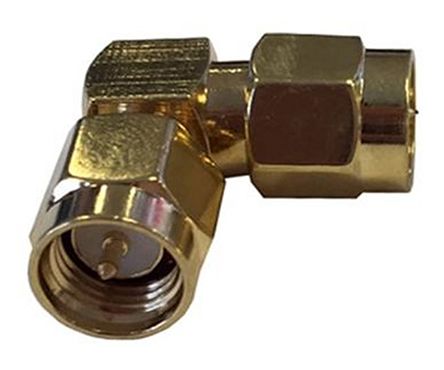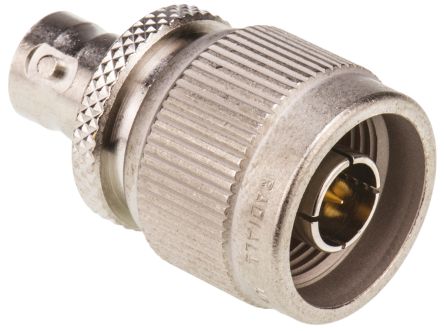- Automation & Control Gear
- Cables & Wires
- Enclosures & Server Racks
- Fuses & Circuit Breakers
- HVAC, Fans & Thermal Management
- Lighting
- Relays & Signal Conditioning
- Switches
- Batteries & Chargers
- Connectors
- Displays & Optoelectronics
- ESD Control, Cleanroom & PCB Prototyping
- Passive Components
- Power Supplies & Transformers
- Raspberry Pi, Arduino, ROCK, STEM Education & Development Tools
- Semiconductors
Coaxial Adapters
A coaxial adapter is a compact, single-piece component designed to connect devices with incompatible coaxial connectors, allowing a smooth and reliable flow of data or signals. Primarily used in RF (radio frequency) applications, coaxial and RF adapters link devices like antennas and transmitters, supporting efficient data transmission across various systems. These adapters are essential in high-frequency fields, ensuring connectivity in telecommunications, broadcasting, and similar sectors.
What Does a Coaxial Adapter Do?
Coaxial adapters are functional in bridging connections between various RF equipment, facilitating seamless signal flow across devices. They enable flexible configurations by connecting different types of connectors, such as male-to-male or female-to-female setups, which might not otherwise be compatible. This adaptability is valuable in settings that require stable, interference-free data transfer, where coaxial adapters help maintain signal quality, reduce loss, and ensure reliable performance across complex setups in industries like telecommunications and audio-visual systems.
Types of RF Coaxial Adapters
There are two main types of RF coaxial adapters. Selecting the correct one is crucial for maintaining signal quality and ensuring device compatibility.
In-Series
An in-series adapter is a two-port interconnection device that connects components with the same connector type, allowing conversions between genders, such as male-to-female. Known also as inline couplers or barrel adapters, in-series adapters are widely used for joining two lengths of coaxial cable to extend a cable run within the same connector series, ensuring consistent signal transfer. These adapters are often found in applications where a straightforward connection is needed without modifying the connector type, making them ideal for setups requiring gender conversion within the same connector format.
Between-Series
Between-series adapters serve as interconnection devices that bridge two different RF coaxial connectors, such as BNC to N or SMA to TNC connectors. These adapters are essential for connecting equipment with incompatible connectors, making it easier to integrate various devices without needing to reconfigure or replace cables. Between-series adapters are commonly used in environments with diverse equipment standards, enabling users to connect different RF systems effectively while preserving signal integrity.
Types of Coaxial Adapter Specifications
When selecting an RF coaxial adapter, several key attributes influence its performance and suitability for different applications.
Gender Changer
Gender changers allow for flexibility by offering male-to-male, female-to-female, or male-to-female configurations. These variations ensure connectors can adapt to devices with differing port types, making it easy to create custom setups without altering the equipment. Gender changers are invaluable in complex configurations, mainly when space is limited, or specific male/female configurations are required for optimal connectivity.
Body Orientation
Body orientation refers to the physical design of the adapter, allowing users to choose options that best suit their setup’s spatial and operational needs. Below are common orientations:
- Straight-Through Adapters: Straight-through adapters maintain a direct line between connectors, making them ideal for setups where cables can align without requiring directional adjustments.
- Right-Angle/Elbow Adapters: Right-angle adapters are designed for connections that require a 90-degree angle, useful for limited spaces or equipment setups where straight-through connections are impractical.
- Tee Adapters: Tee adapters create a three-way connection, allowing a single signal to branch off in two directions, commonly used in monitoring setups or dual-device connections.
- Angled Adapters: Angled adapters offer flexibility in connections, available in various angles besides the standard 90 degrees, useful for customising layouts.
- Vertical Adapters: Vertical adapters extend connections in a straight upward orientation, commonly used in rack-mounted systems where vertical space optimisation is essential.
- Bulkhead Adapters: Bulkhead adapters allow for a secure connection through panels or enclosures, ideal for equipment mounted within enclosures where connectors need to penetrate the housing.
Impedance
Impedance is a measure of electrical resistance within the adapter, critical for matching the impedance of the connected devices to avoid signal loss. Common impedance values include:
- 50 Ω: Often used in professional and military applications for optimal signal transmission.
- 75 Ω: Common in audio and video applications, including broadcast environments.
- 100 Ω and 500 Ω: Used for specialised applications, ensuring signal consistency in specific technical setups.
Common Uses of Coaxial Adapters
- Extending Coaxial Cables: Coaxial adapters can join two coaxial cables, effectively extending the length of a cable run. This is especially useful in setups where the original cable may be too short to reach the required device or equipment.
- **Connecting Coaxial Devices: **Coaxial adapters enable seamless connections between different devices, such as linking a transmitter to an antenna or connecting audio-visual components. They facilitate stable signal transfer, ensuring reliable communication between connected devices.
- **Adapting Between Different Types of Coaxial Connectors: **Coaxial adapters are essential for converting between different connector types, such as BNC to SMA or RCA to F-type. This allows compatibility across various devices, supporting flexible and adaptable setups across multiple industries.
Applications of Coaxial Adapters
- Laboratory: In labs, coaxial adapters enable connections between test instruments and measurement devices, ensuring signal integrity for precise data collection and consistent test results.
- Test and Measurement: Coaxial adapters link devices like signal generators and oscilloscopes, ensuring accurate signal transfer and compatibility across diverse equipment for reliable diagnostics.
- Communications: In communications, coaxial adapters connect RF devices (e.g., transmitters, receivers), minimising signal loss and interference for smooth data transmission across networks.
- Base Stations: At base stations, coaxial adapters link communication modules and antennas, maintaining stable, high-quality connections crucial for cellular and radio networks.
- GPS: Coaxial adapters connect GPS receivers to antennas, ensuring stable, accurate signal flow essential for navigation, tracking, and timing applications.
- **LAN (Local Area Network): **In LAN setups, coaxial adapters link routers and switches, supporting high-speed, stable wired connections in commercial and industrial networks.
- Antennas: Coaxial adapters connect antennas to transmitting and receiving devices, optimising signal quality for clear, uninterrupted radio, TV, and wireless communication.
Delivery information
As a trusted supplier and distributor of coaxial adapters and related power products like electrical cables and connectors, RS offers a seamless ordering experience with renowned brands such as RS PRO, Amphenol RF, Huber+Suhner, Radiall, and Rosenberger. Enjoy next-working-day delivery within Singapore on online orders (Terms & Conditions apply). For more details on our delivery services and charges, please visit our Delivery Information page.
Explore the new look of the category page
Popular Searches
Related links
- RF Coaxial Connectors & Adapters
- Aerial Sockets
- Coaxial Connectors
- RS PRO Straight RF Adapter Type F Socket to Type F Socket
- RS PRO Straight RF Adapter Type F Socket to TV RF Aerial Socket
- Amphenol RF Straight 50Ω RF Adapter Plug Socket 11GHz
- Telegartner Straight RF Adapter BNC Plug to SMA Plug 4GHz
- Telegartner Straight RF Adapter BNC Plug to TNC Socket
